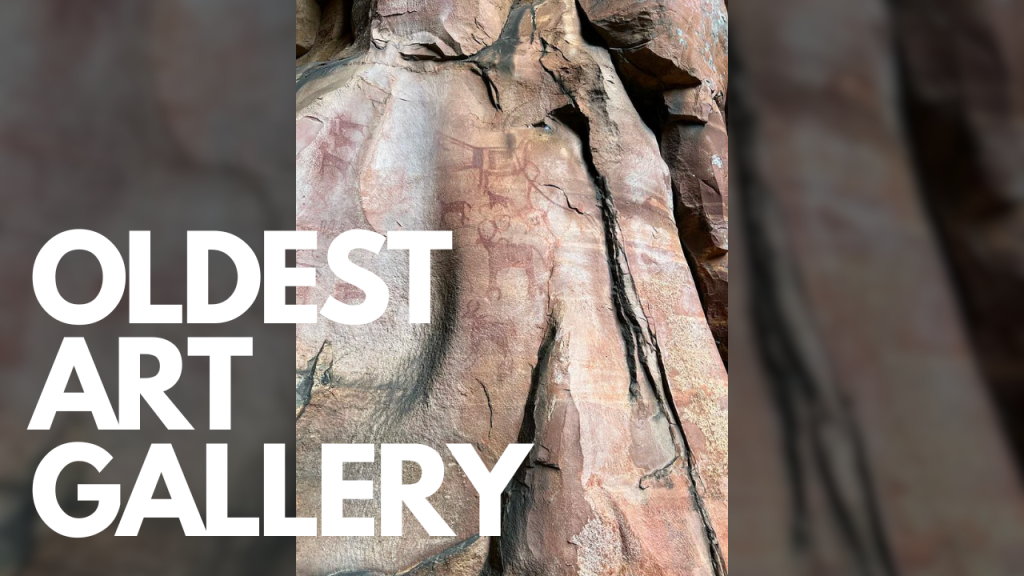Introduction
India, a land steeped in history and culture, boasts of numerous UNESCO World Heritage Sites that offer a window into its rich past. One such site is Bhimbetka, where cave paintings dating back 30,000 years offer a glimpse into the prehistoric art and early lives of humans. However, alongside the awe-inspiring artworks, a different picture emerges—one of inadequate tourist infrastructure and a struggle to maintain the sanctity of this historical treasure.
A Journey to Bhimbetka: Infrastructure Lags Behind Domestic Tourism Boom
In the heart of India lies Madhya Pradesh’s state capital, Bhopal, a gateway to the ancient marvel of Bhimbetka. Despite the booming domestic tourism industry, it becomes apparent that the infrastructure has not kept pace with the influx of visitors. The journey from Bhopal to Bhimbetka, approximately 45 kilometers away, unveils the challenges that tourists face.

A search for public buses connecting the two locations yields no results on the state’s transport department website. Alternative travel options suggest a route involving a bus to Hoshangabad and then a separate journey to Bhimbetka, adding complexity to the travel experience. In the absence of viable public transport, tourists often have to rely on taxis, becoming a potential deterrent for budget-conscious travelers.
Bhimbetka’s Ancient Artistry and Modern Disconnect
At Bhimbetka, visitors are treated to a remarkable collection of 15 rock shelters adorned with prehistoric art. Among these, cupules stand as a testament to early human creativity, possibly dating back as far as 100,000 years ago, according to the Archaeological Survey of India. The Zoo Rock Shelter takes visitors on a journey through time with paintings spanning from the Mesolithic to the Medieval era. Yet, the lack of proper information dissemination and scarcity of licensed tourist guides can leave visitors navigating the site without a proper understanding of its historical significance.
Families, children, and tourists captured by the allure of Bhimbetka often undermine the need for conservation. Climbing rocks for photo ops and posing for selfies, they remain oblivious to the importance of preserving the site for future generations.

Bhopal’s Monuments: A Battle Against Neglect
The challenges extend beyond Bhimbetka. A stroll through old Bhopal reveals the plight of the city’s monuments, a blend of Afghan and French architecture. While the historical and architectural fusion is unique, neglect has led to varying degrees of dilapidation. Though there was initial governmental concern, recent years have seen a shift in focus. Restoration efforts and building conservation have been hindered by a lack of funds and support.
Tourism Infrastructure: A Critical Need
While an advertising campaign for Madhya Pradesh tourism might catch attention, it’s clear that enhancing tourist footfall requires a stronger focus on infrastructure. The responsibility cannot solely rest on the government; local awareness and involvement play pivotal roles. To boost local tourism, there’s a need to connect people’s livelihoods with their cultural heritage. This symbiotic relationship can cultivate a sense of ownership and responsibility towards preserving these treasures.
Budgetary Constraints and Cultural Conservation
The allocation to the ministries of tourism and culture, including the Archaeological Survey of India, remains insufficient. Despite being slashed in the previous fiscal year, the government’s allocation to the Ministry of Tourism for the current year remains below the required levels. The Ministry of Culture fares somewhat better, yet the challenges persist.

MP Tribal Museum: A Beacon of Culture and Sustainability
Amidst these challenges, the Madhya Pradesh Tribal Museum shines as a beacon of hope. The state’s diverse tribal population, comprising over 45 ethnic tribes, finds representation within its walls. The museum not only showcases tribal artifacts but also provides an immersive experience, allowing visitors to understand their lives, cultures, and traditions.
One particularly captivating exhibit offers near-real replicas of tribal homes, showcasing their architectural prowess and sustainable living practices. A highlight of another gallery is an octagonal wedding canopy adorned with intricately carved trees representing myths from different tribes. Additionally, the museum celebrates the tribal community’s enduring commitment with an annual 75-day chariot-building ritual for the Dussehra festival.
Conclusion: Navigating Challenges for a Brighter Future
As India’s domestic tourism flourishes, it’s crucial to address the gaps in infrastructure and awareness that threaten the preservation of its cultural and historical treasures. Bhimbetka’s ancient art and Bhopal’s architectural fusion deserve the attention and support necessary to ensure they stand the test of time. With concerted efforts from the government, local communities, and visitors, India’s rich heritage can continue to shine for generations to come.

Contributor





